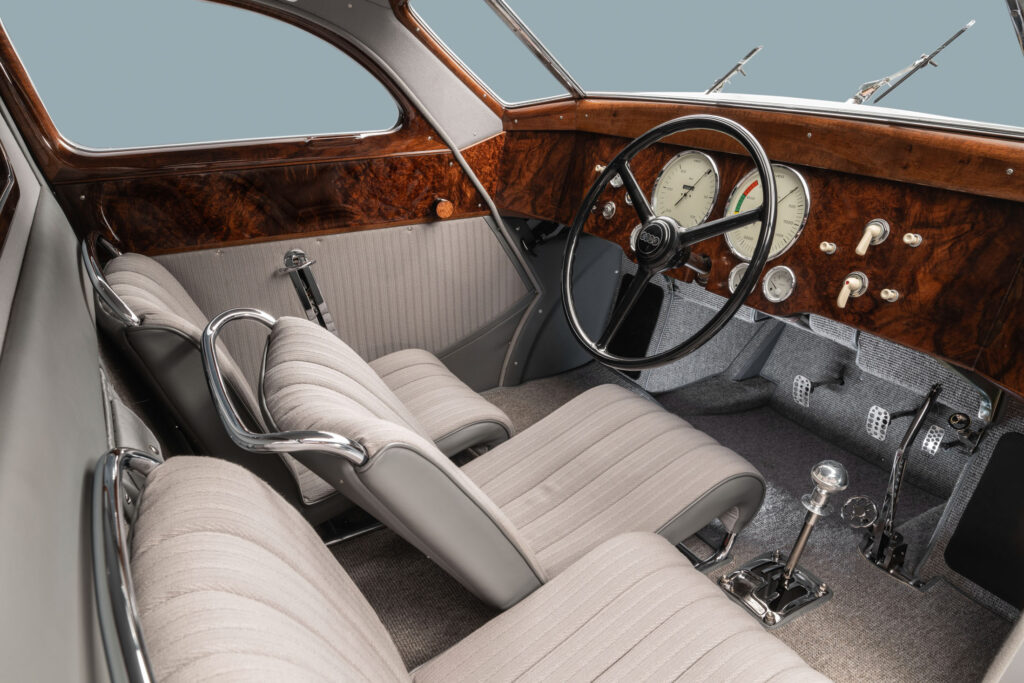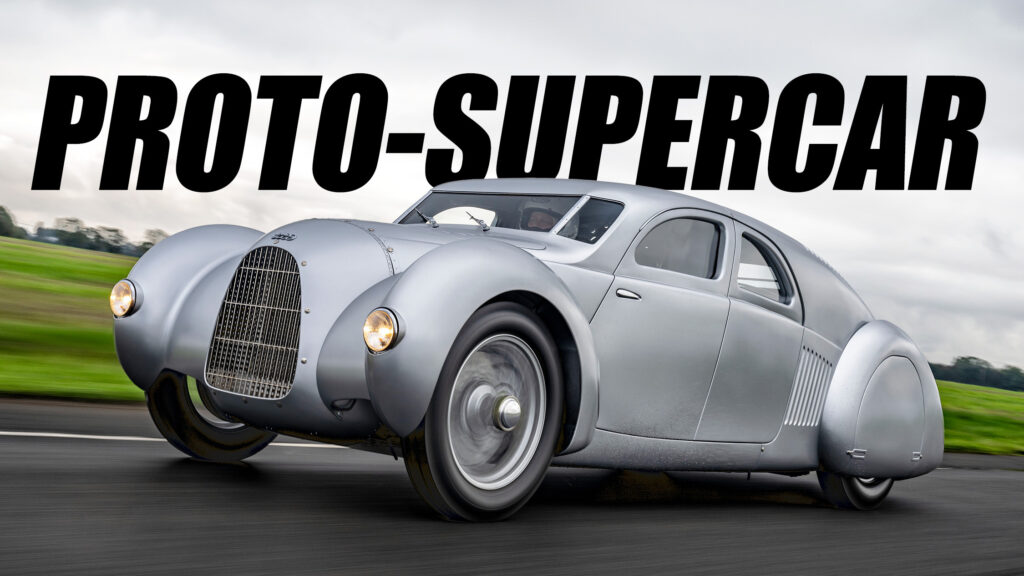- Audi’s Goodwood Festival of Speed centerpiece is a recreation of a stillborn 16-cylinder Auto Union supercar that’s like a 1930s McLaren F1.
- The Type 52 was intended as a road-going version of Auto Union’s mighty grand prix racers but was axed before it made production.
- Audi entrusted the build to Brit firm Crosthwaite & Gardner, who previously recreated Auto Union’s open-wheel racers.
For anyone laboring under the misapprehension that pre-war cars are slow, boring and all look the same, Audi has something on show at this weekend’s Goodwood Festival of Speed that might change your mind.
Called the Auto Union Type 52, it’s scratch-built recreation of crazy 16-cylinder Auto Union supercar that was killed off at the design stage before it had the chance to hit the road.
Related: 1930s Auto Union Racing Car Futuristically Reimagined
Auto Union was the precursor to today’s Audi brand and in the 1930s the firm dominated pre-F1 grand prix and hillclimb competition with its mid-engined 16-cylinder monsters. But few people know that the firm, together with Ferdinand Porsche, also considered building a street-legal sports sedan from the same hardware that could have been used in events like the Mille Miglia. One with a three-seat layout, just like a McLaren F1.
Unfortunately for rich speed junkies keen to make the most of Germany’s fledgling autobahn network when Hitler was still a hero, the “Schnellsportswagen” (fast sports car) as the original concept papers called it, never made it past the design stage. Until last year, that is, when British sports car specialists and Auto Union experts Crosthwaite & Gardner finally finished a multi-year project commissioned by Audi to do what Auto Union’s team couldn’t.
The original 1930s plan called for the Sportback sedan-looking coupe to run a V16 engine displacing the same 4.4 liters as the 1934 Type A racers, but detuned to take normal pump gas. It would have delivered 197 hp (200 PS) at just 3,650 rpm with the help of a supercharger – enough for an impressive 124 mph (200 kmh) top speed.

But with the benefit of knowing how Auto Union’s GP cars would develop in the years after the sedan project was canned, Crosthwaite & Gardner upgraded this build to a 6.0-liter motor like the one in the 1936 Type C.
Again equipped with a supercharger, but running at a much higher state of tune than was originally intended and requiring a special methanol fuel blend, it makes 513 hp (520 PS). And while Audi doesn’t quote a top speed, we imagine it could probably give plenty of modern performance cars a hard time in a top speed shootout.
Audi Heritage and Crosthwaite & Gardner were forced to deviate from the plans in other areas, extending the wheelbase from 3,000 mm (118.1 inches) to 3,315 mm (130.5 inches) simply to make room for the powertrain and suspension. The build team thinks Audi would have had to make similar accommodations if they hadn’t bailed at the on-paper stage.
Compared to the cockpits of the no-nonsense Auto Union racers, the inside of the Type 52 appears rather more luxurious. Though the presence of rear doors makes it look like there should be two rows of seats, the reality is more like one staggered row, with the two outer chairs mounted slightly behind the centrally-mounted driver’s seat, and the giant V16 taking up all the room behind.
Audi says the Type 52 is a one-off, but we wouldn’t be surprised i there are one or two billionaires visiting the Festival of Speed this weekend who will be determined to get one for themselves.
















